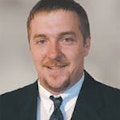This month's issue of ABRN
contains a Hands-On Management feature that I hope each of you will take a
few minutes to read. I also hope that each of you will put some of its
valuable advice to use. The feature, "Get Paid for Your Work,"
deals with one of the longest-running, most contentious issues mentioned
by collision repairers-the various labor and materials rates a shop uses
to determine its charges.It is natural that many repairers feel pressured by insurers to
maintain low labor and materials rates. Why? They, the insurers, are
pressured to maintain low rates. This is a simple fact every collision
repairer must accept. And repairers will always find this pressure present
in their dealings with insurers.Faced with increasing price competition on the sales side of their
businesses, insurance companies naturally want to maintain their
profitability by keeping pressure on the cost of repairs. In recent years,
most of the collision repair industry's concerns have been directed at
insurers' efforts to decrease repair cycle time, to keep the embattled
non-OEM parts business alive and to refer work to preferred repair
facilities. But part of the insurers' cost control efforts are always
directed at the per hour labor and materials charges.Without getting into the "fairness" of the labor rate setting
mechanisms or the sentiments of those who believe insurers exert excessive control
over repairer's business-that's a can of worms best kept for a separate
editorial-the issue of rates is valid and of vital importance for repairers.Too few repairers understand their hourly operating expense per
technician clock hour. Without this crucial piece of knowledge, it's
difficult-if not impossible-to determine a desired charge that will
provide a profit. Quantifying a shop's actual cost per hour and tracking
it regularly helps identify the real impact of rising prices-a necessary
step to justifying the increase in a shop's charges.This is especially crucial this year given the tremendous increase in
energy costs that have come to bear on the United States. It costs a lot
more today to heat the shop and to bake a car in the spray booth than it
did one year ago. The rise in energy and oil prices has also led to price
increases for many of the materials repairers use in the repair process.Our Hands-On Management article explains the process of determining
a repair facility's actual overall operating expense per hour. The
formula is straightforward, and those shops that have never completed the
exercise will be surprised by what they find.In the real-time world we live in, where seconds tick off the clock at
a rate of 60 per minute, chances are very likely that a shop's hourly
operating cost is higher than its per hour labor rate. This helps drive
home the weight of labor productivity on the profit-making potential of
the facility.Give the article a read, and then sit down and do the math. The
exercise will benefit your business in the long run by providing a
valuable understanding of your true cost of doing business. At the same time, it can help
justify your increased charges that result from rising labor and energy costs.
